The problem with 90° v-twins (and V-fours) and racing has something to do with weight distribution. Although achieving perfect primary balance, an advantage with regard to vibration and parisitic loss, only Ducati insists on it. KTM uses a 75° angle, for instance, and other manufacturers of v-twins and v-fours with racing aspirations use less than 90° angles (although some believe Honda is using a 90 degree v-4 in MotoGP, and doing quite well).
If you can’t get sufficient weight over the front wheel, what happens? Under-steer and the occasional washed out front end? You could call Casey Stoner and he would be happy to talk to you about this (but he won’t allow me to give out his phone number).
Which brings us to Gigi Dall’igna. Attempting to transform the Desmosedici into a competitive machine during his first year at Ducati, Dall’igna undoubtedly remembers fondly the Aprilia he left, at least insofar as that narrow angle (65°) v-four could be placed plenty close to the front axle to provide adequate bite when turning in.
With Andrea Dovizioso finishing in fourth (and just 5 seconds off the winner) during the previous round, Dall’igna is finding some progress, but another step awaits this weekend’s Aragon race. The next iteration of the Desmosedici, the GP 14.2, should debut beneath Dovizioso and Andrea Iannone. With a stout aluminum frame that has largely done away with the engine as a stressed member, it appears Dall’igna continues to slide the engine forward (including that nasty gyro effect from the crank).
Next year there will be an “all new” Desmosedici that is purely Dall’igna, but the man is already delivering the best handling Ducati MotoGP bike in memory.
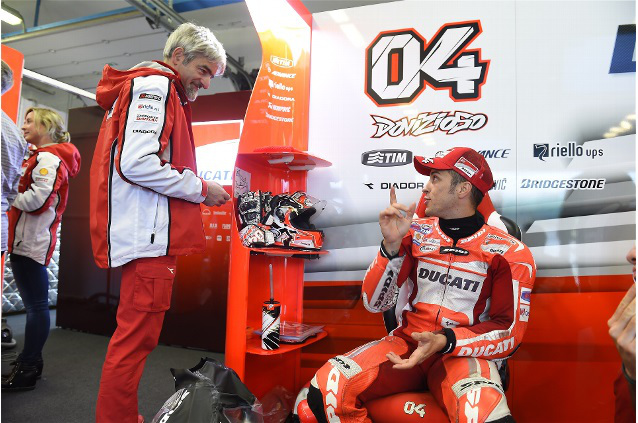

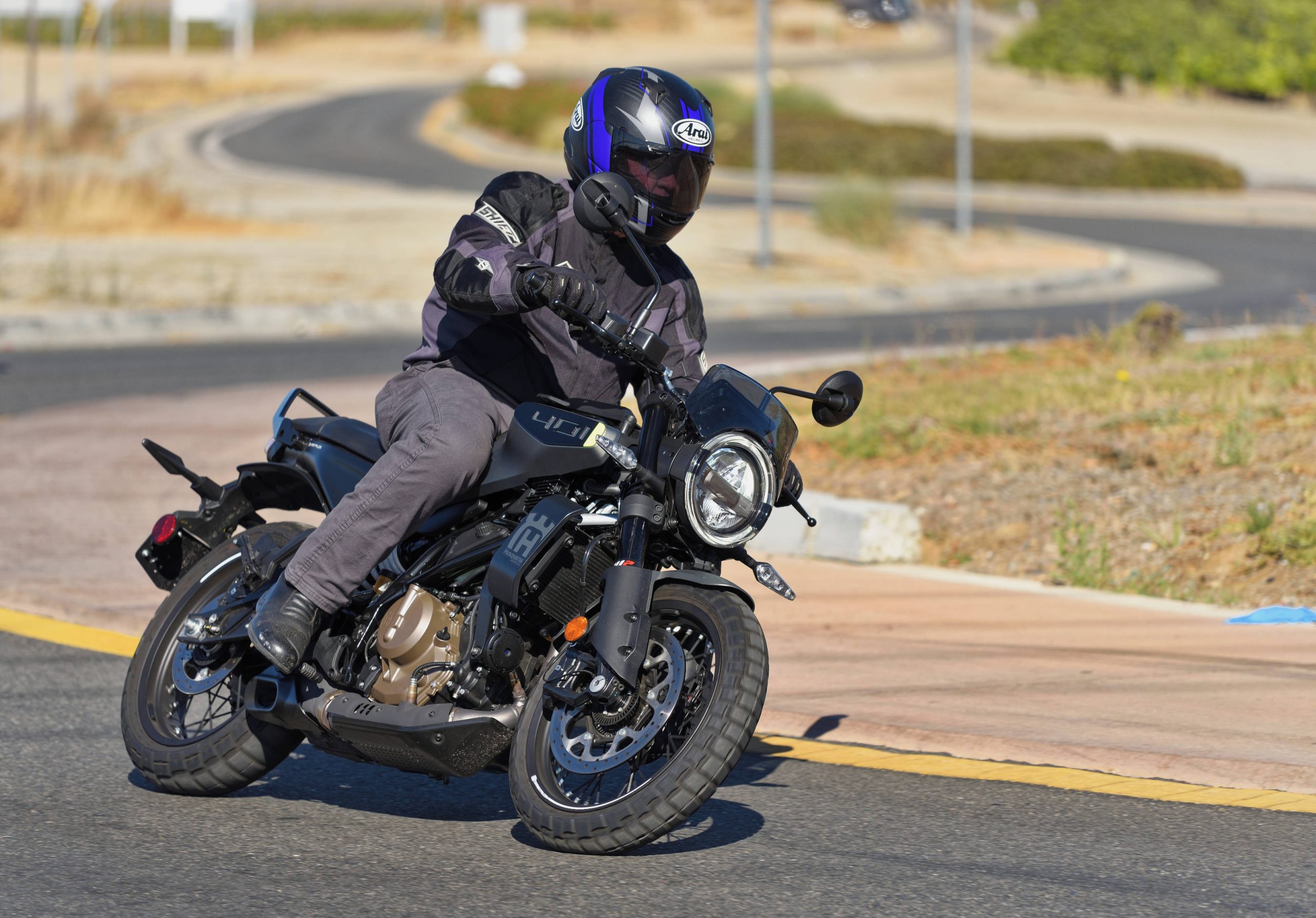

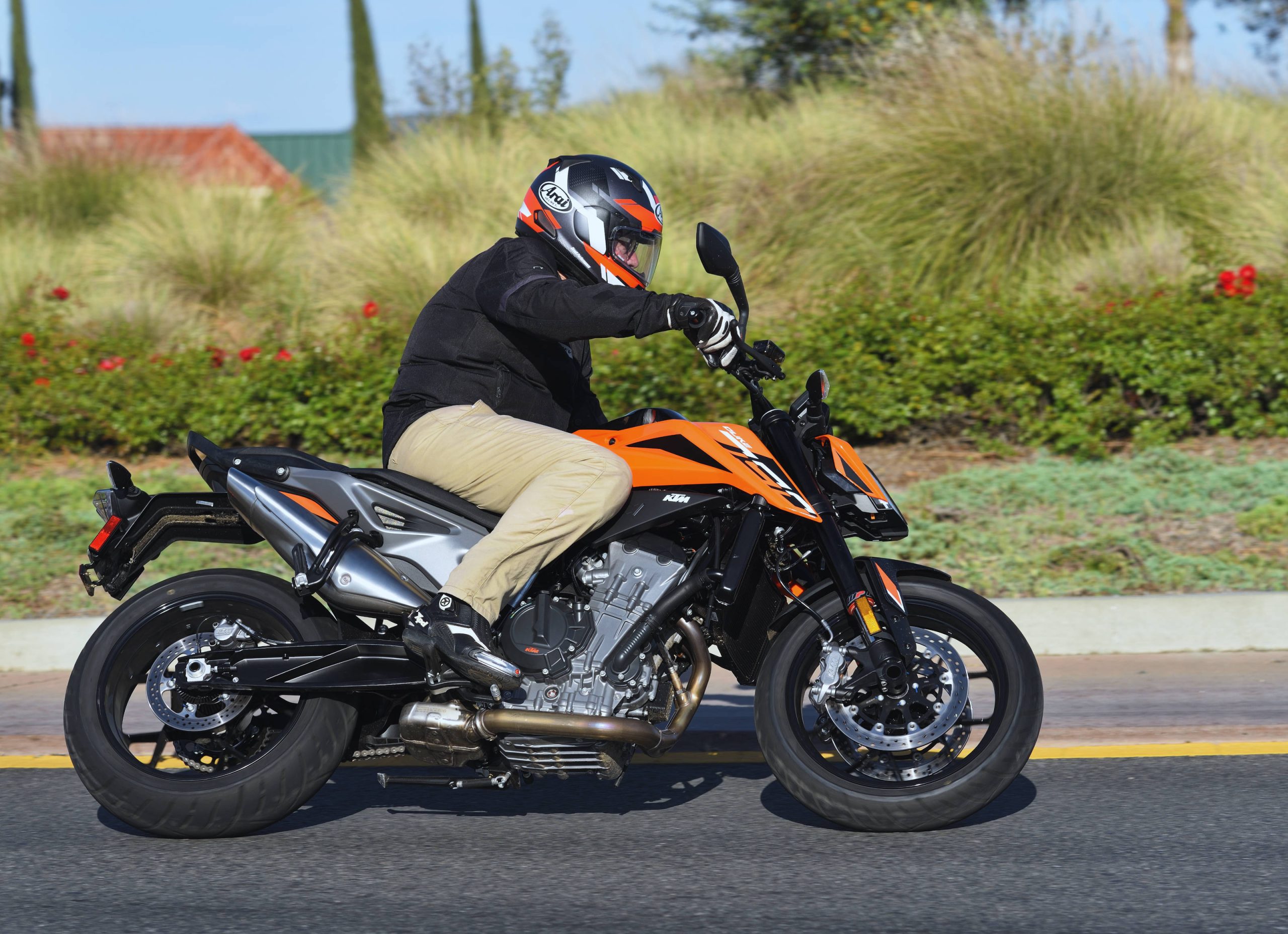
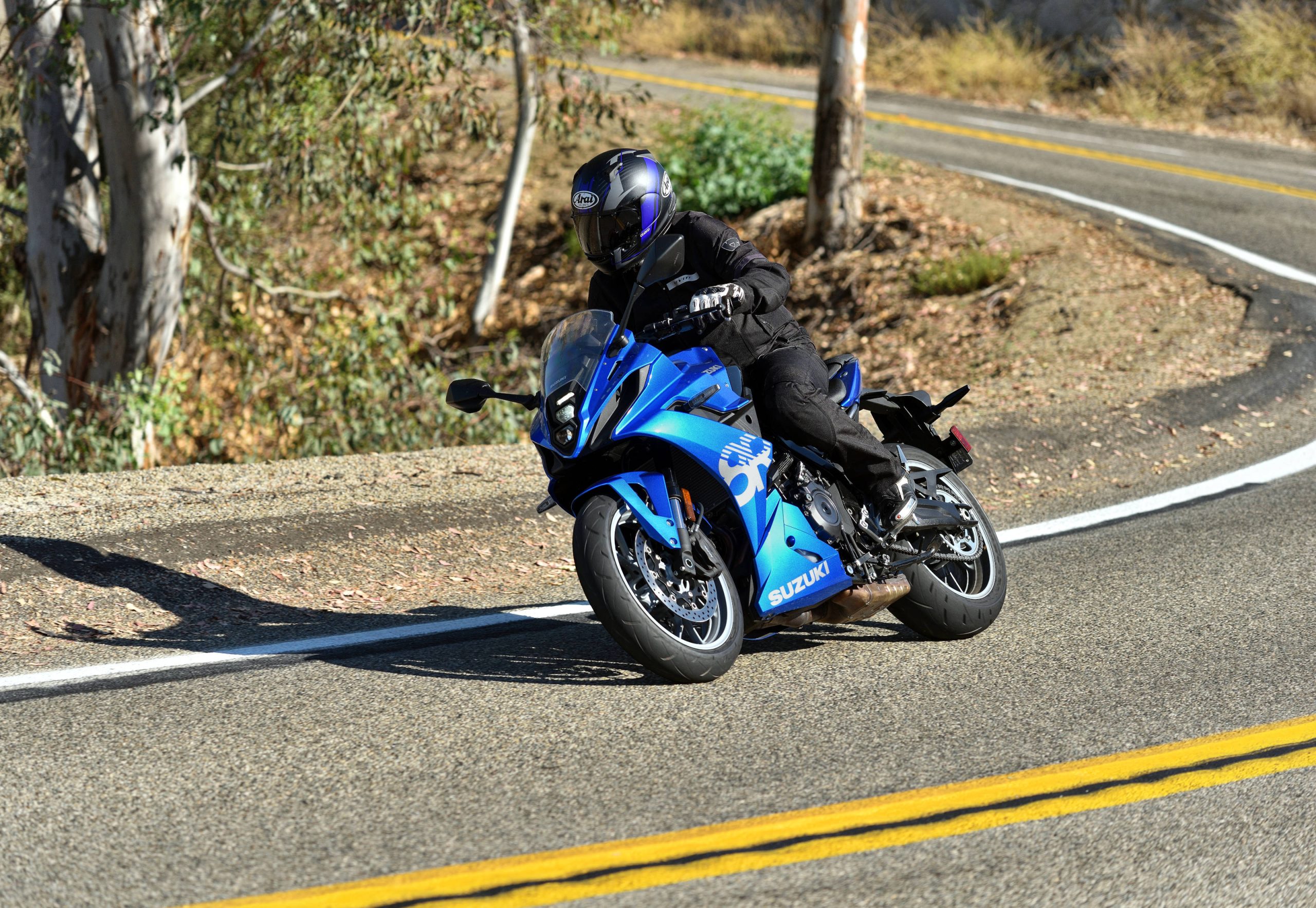
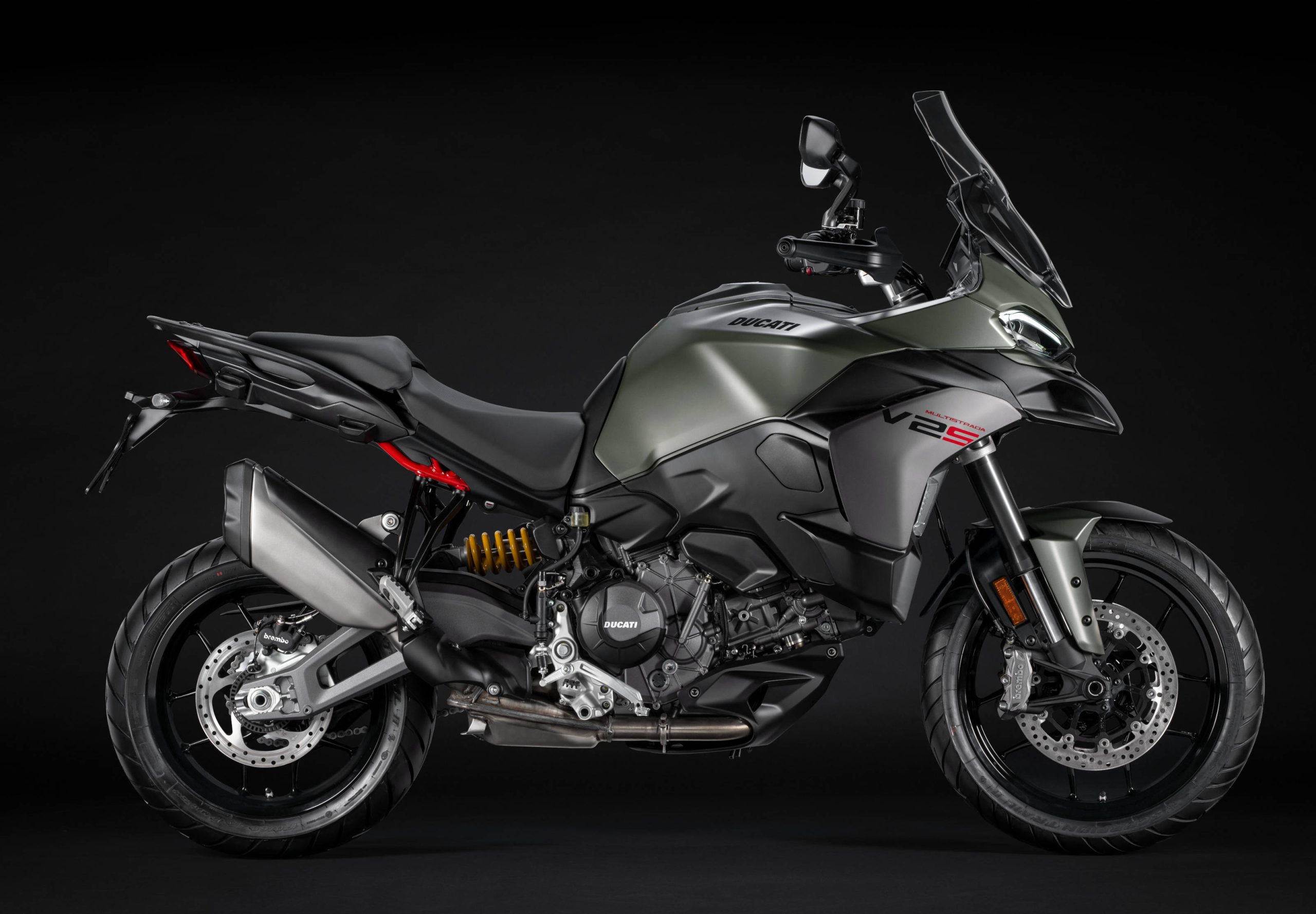
re: “employing even small measures such as shortening the exhaust valves which enables that side of the head facing the front wheel to be shorter”
re: “I read where Honda found a way to make the exhaust valves shorter on the front cylinder and hence the head is shorter enabling it to be located closer to the front wheel.”
re: “very short exhaust valves to cant the valve covers to lean the engine as far as possible to the front”
folks, may I suggest we NOT repeat anything resembling the above 3 statements (facepalm). let it just stay in this thread and die here in this forum, never to be seen/heard from again. it’ll be our lil’ secret.
re: “Maybe that’s not possible with the desmo.
maybe that’s not possible with ANY engine, never mind one punching north of the double ton.
my fellow motorcyclists, Mr. and Mrs. America, and all the ships at sea, please direct your attention to the following graphics…
(harvested from the net these)
http://tinyurl.com/n45nmev
http://tinyurl.com/lmmuvk8
http://tinyurl.com/p9yrhnk
in all this top end focus, it seems many have lost sight of what an engine is (ie. an air pump) and what the job of the cylinder head is (ie. sealing and unsealing the combustion chamber in the regulation of air flow through said air pump). this is referred to as not seeing the “forest for the trees” but that’s okay, it’s not like this stuff’s “easy reading”. come, walk with me BACKWARDS through the engineering process…
(cue magical/mystical harp music transitioning to lab scene)
I offer to you, before bikes can put 240 hp to the ground and reach velocities approaching 220 mph…? they must FIRST be fitted with 240 hp air pumps capable of sustaining combustion at 220 mph. make sense…?
ok, if you understand that, then you’ll understand a 240 hp air pump must have PORTS sized for flow rates (CFM) equating to 240 hp (ref graphic #2). make sense…? thus and so the design process all starts (and ends) with the ports. ports are EVERYTHING. so…
Q: if the “fancy thinking box” in the corner running the fluid dynamic calculations reports you DON’T have the necessary mass flow through the engine for your target HP then whaddaya got…?
A: F@#CKALL. (group says aloud)
whoa, check out the big brain on the group…!!! that’s right, you are smart mo-fo’s. as you see by the image (ref graphic #1), head design starts from the inside OUT, not the outside IN. the Mighty Mighty Boffins (no, that’s not a band) shape and size gigantic ports and then the appropriate “mechanism” is sorted to make it all work. the method of valve actuation (ref graphic #3) is really a SECONDARY thought process, NOT a first. so…
Q: which comes first, the chicken or the egg…?
A: c, none of the above. PORTS come first.
right again. more importantly, that so called “short stem valve” has to bridge ports that MUST (by Laws of Physics) be as relatively large (voluminous) and straight as space will allow. when you also factor there’s a LIFT calculation involved (the bloody things don’t just sit there static, but dynamically RAISE off their seats) talk of “short valves” doesn’t fly at this man’s airport.
the only way you’d be able to appreciably shorten a valve is to ask the engine (your air pump) to breath through tiny, collapsed volume, coffee straws. “coffee straws” are the ANTITHESIS of 220 mph. now you guys are welcome to believe in all the “voodoo” and Superman chatter that you like, but for ME that’s MYTH BUSTED.
(I now return you to your regularly scheduled REALITY)
(so NG found some nice graphics and concept to brag about….; spare Duc…. half millimeter matters (pun intended?)… that’s why they don’t win)
once I read we are going to have free art, because we have way to much spare time…. yup engineers (or I love detail guys) too.
some other will say, yeah you can have freaking incredible 240hp pump but nothing is worth it without heat management… and he will be right….
some other will say, yeah that’s true but at that speed and bore vs stroke relationships set by Dorna (http://www.motomatters.com/news/2009/12/11/new_2012_motogp_regulations_4_cylinders_.html) therefore max valves radius are set so… flow will be determine by ram air designs… and he will be right….
or mass distribution and how affect handling…
or electronics and how smooth we can make acceleration…
or IT and how close we can stay to the max grip constrained to duration of tyres…
or… or… or…
so no simplistic view of nothing, everthing matters… so you are right… but as everything in universe, that’s just a face of the many ones
“(I now return you to your regularly scheduled REALITY)” reality is perceived sir, no one leaved their own ones…
“I offer to you, before bikes can put 240 hp to the ground and reach velocities approaching 220 mph…? they must FIRST be fitted with 240 hp air pumps capable of sustaining combustion at 220 mph.”
Did you expect to be taken seriously with this baloony? What the heck does traveling speed do with combustion?
Forgive me for stating the obvious. In an internal combustion engine the volume of the exhaust gas is larger than what gets sucked in. I wouldn’t call it a AirPump.
” flow rates (CFM) equating to 240 hp” Lol. Perhaps you should work on your google foo.
Unlike a V-twin, a V4 with any V-angle can achieve perfect primary balance without any help from a balancer.
For instance a 78°V4 with a 12°crank would have the same dynamic balance as a
90°V4 with a 360°crank and would even fire in the same 0-90-270-360° order. By using an offset crank,
you can use each bank’s imbalance to completely cancel each other out. It’s an old engineering trick.
So, for a V4, there is no-point-what-so-ever to insist on a 90°angle. (aside from their silly “L90 heritage” that is)
If the bulky desmo-head is messing up the package, why not slightly narrow down the V angle to compensate?
I hope the Ducati senior management would truly give Gigi free reign to do what ever that needs to be done this time.
The predecessor Preziosi had to get permission from senior management for each and every change however slight.
IMO “heritage”, “brand” and “senior management” has no place on the racetrack.
re: “you can use each bank’s imbalance to completely cancel each other out”
complete cancellation’s a misnomer.
re: “It’s an old engineering trick.”
that ended in many a broken crank. see, no free lunch. Hawk guys know what I’m talkin’ bout.
http://tinyurl.com/pkvpcnz
NormG: “that ended in many a broken crank. see, no free lunch. Hawk guys know what I’m talkin’ bout.”
You are talking about split-offset-crank-pin in a V-twin. I know about those. And their failings.
That’s not what I talked about. In a V4 you can use a shared(non-split)-crank-pin and do the same thing.
You offset the left and right halve of the crank instead of using a split crank-pin.
And with a twist of this trick, you can balance a V5 like Honda did with their 75.5° RC211V.
And in this case a complete cancellation is not a misnomer.
BTW “each bank’s ” was a mistake. I should’ve said “each halves’s”
You would think that after billions of years of motorcycle building experience, Ducati could construct a motorcycle on par with everyone else in the handling department. Maybe the motor has reached the height of its development in its current configuration and its time to either demo its desmo or 75 its 90.
…or put a 300 pound rider on it and rail in the corners.
Yeah – thats true. R&D bucks speak loud. But mnotor aside, front end feel is front end feel. Isn’t mechanics – mechanics, and geometry – geometry, no matter what company?
you do know that Ducati is a tiny company, Honda probably spends more on R&D than Ducati grosses in a year
really good point, looking at it that way, it’s impressive the efficiency of their R&D
re: “Maybe the motor has reached the height of its development in its current configuration”
i’ll say. 217 mph…? whew…!!! and that’s not even firing it as a screamer.
So here is an idea – if weight distribution is a problem, why not add appropriate ballast to the bike? I don’t think it would be too difficult for Ducati to make their GP bikes lighter than the allowable minimum weight, and then use, say, lead ballast in the front of the bike to move the weight distribution forward (and bring the weight up to the minimum).
Re: “I don’t think it would be too difficult for Ducati to make their GP bikes lighter”
Correct, it’s not difficult just prohibitively expensive.
Gentlemen,
For what it’s worth, the problems with the overall dimensions of the 90 degree V layout, are well documented not imagined.
It’s one of the reasons Kawasaki spurned producing a 90 degree V4 sportbike back when the Honda Interceptor line came out in the 80’s.
An inline 4 is just easier to configure in a sportbike that relies so much on front end weight and feedback.
If the Honda motogp is a 90, then they’ve obviously worked very hard to get more weight over the front; employing even small measures such as shortening the exhaust valves which enables that side of the head facing the front wheel to be shorter, as on their RCV1000 .
The fact that Casey Stoner was able to make it work is a testament to his abilities.
From a cursory visual comparison, it looks like the desmo valve arrangement is larger than at least a conventional shim over bucket ( which no one is using ) and I’d venture to guess, a pneumatic set up.
If Dorna would allow a larger bore to stroke ratio no doubt Ducati would jump at it if for no other reason than greater compactness and layout freedom.
Aside from Yamaha’s I-4, are there any MotoGP engines that AREN’T 90*/V-4’s?
Honda
Ducati
The former Suzuki
Before 1,000cc 4-cylinder engines were allowed into WSBK, Ducati and Honda were the two most competitive bikes with 90* V-twins. Honda even made their to answer the Ducati’s dominance. Their previous engine had been a (you guessed it..) 90* V-4.
Seems like much ado about nothing. It’s advantages obviously eclipse this small packaging issue. If not, then everyone would be using Yamaha’s cross-plane I-4 concept.
re: “Aside from Yamaha’s I-4, are there any MotoGP engines that AREN’T 90*/V-4’s?”
none, with a prayer of winning a race or snagging a podium. the aprilia’s a narrow 65, and the leftover Kawasaki CRT is just the Zed I4.
re: “The former Suzuki”
the former “sucker of wind” was also a narrow 65.
The Suzuki was a 60 degree V
close. the MkI they raced initially was a 60 dubbed the XREO. you missed when they created a MkII and the V angle was opened to 65, I think It was then I took on the moniker GSVR.
this happened a few year later, but was still inside the 990 era. remember, this is Norm G. you’re talking to. the guy with the mind filled with useless MotoGP information.
WSBK domination by Ducati and Honda in the 750 i4 days was due to the additional displacement allowed for v-twins. They may have been down on peak HP, but made up for in gobs of torque. It’s why Honda built the RC-51.
I’d love to see the 750cc days of WSBK come back.
re: “Gentlemen, For what it’s worth, the problems with the overall dimensions of the 90 degree V layout, are…
…misunderstood and misconstrued, with these interpretive errors quickly proliferating to the four corners of the globe. way to go o’ great and powerful internet, you’re not helping.
re: “it looks like the desmo valve arrangement is larger than at least a conventional shim over bucket ( which no one is using ) and I’d venture to guess, a pneumatic set up.”
looks can be deceiving. if we limit our view to just the area around the valve…? then a basic, old style, 2V (air cooled) setup found in any monster is technically smaller, and they sport 2 shims. hey, how ’bout that…? now when we shift our attention over to the cam area, that’s when the desmo loses. the lobes are GINORMOUS, and of course there are 2 of those for any one valve.
but view both approaches as a whole…? and the total space each occupies (again) basically amounts to 6 in one, 1/2 dozen in the other, so pick your poison.
Yes the Honda is 90deg incl angle.. no balance shaft…360deg crank…very short exhaust valves to cant the valve covers to lean the engine as far as possible to the front….
harder to do with desmo its all about packaging
re: “that nasty gyro”
no such thing. prepared authentic with that cucumber “tzatziki” sauce or whatever that is…? OMG, it’s to die for.
like the Italian’s 90 degree Desmo…? the Greeks really got that one right the first time out, lemme tell ya.
yea, but you need a spanokopita wrench to get to the gyro…
“The problem with 90° v-twins (and V-fours) and racing has something to do with weight distribution. ”
Well, if Honda is indeed using a 90° V4 as everyone suspects they are, then they have clearly blown that “problem” out of the water.
Honda doesn’t have to package Desmo valves in the heads. The problem for Ducati is not so simple.
Re: “Honda doesn’t have to package Desmo valves in the heads.”
Neither does Ducati, they just keep choosing to. 😉
True, but they race to sell their street bikes, and apparently think abandoning Desmo (or 90 degree V) would hurt their brand.
Harley has “potato”, Ducati has “desmo”. it’s a winning combination.
I tought there were advantage on using desmodromic valves as you avoid the parasitic power loss of springs (main reason for less torque on 4 valve per cilynder configurations as they rev higher), it’s not?
re: “it’s not?”
it is.
Prototypes are using electric valves, not so much pneumatic as once thought. Valve springs float at higher RPM, can’t open and close fast enough to keep up with the higher speeds. Desmo valves can open and close at high RPM but, apparently, the valve train is tall and robs valued space. Is this why they can’t move engine farther forward?
Don’t desmo valves offer a more compact size to the head? This seems like it would benefit Ducati in terms of the packaging discussion.
re: “Don’t desmo valves offer a more compact size to the head?”
yes and no. really it’s best to think of it as “6 in one hand, 1/2 dozen in the other”. when it comes to space requirements…? desmo vs. standard spring vs. pneumatics, they all require a cubic amount of space = X.
if there is any difference…? the amount is too small to really be a factor in locating the engine’s CoG. I mean, your only talking about millimetre/centimetre differences…? that’s nothing to write home about.
they can all be miniaturized. no one design lends itself to this any more than the others as the biggest object is still required in all 3… ie. THE DOUBLE OVERHEAD CAM.
I don’t know if a desmo head is any bigger than a pneumatic spring head or not, but I understand that getting the engine even just a few millimeters closer to the front wheel can make big differences. So that may pose a legitimate problem for Ducati if the head really is taller or “fatter”.
So, Ducati has three points of differentiation that it feels are important to its brand:
1) Racing
2) Desmo
3) 90°
If items 2 & 3 are detriments to item 1, then Ducati does have a conundrum on their hands indeed.
Re: “I understand that getting the engine even just a few millimeters closer to the front wheel can make big differences.”
No, that’s simply what’s been “parroted”. They can get a 90 V4 as close to the front as they need it. Don’t confuse this for being an absolute requirement, you CAN “overshoot the runway” and have too much of a good thing.
Another confusion i hear/see is the assumption that dimensional length for a 90 V2 and a 90 V4 are the same for a given displacement. It isn’t.
What should be obvious is total displacement is distributed across 2 extra cylinders. So that means a left/right axis is in play as well as a front/rear and a whole different bore/stroke. The result is a dramatically shorter engine to begin with. You’re not going to gain this kind of real estate massaging top end dimensions… they’re already massaged.
re: “if Honda is indeed using a 90° V4”
no if’s and’s or but’s #2. what…? BIGRED’s “baby young” to racing 90 V4’s…?
they only INVENTED the bloody things…!!!
https://www.youtube.com/watch?v=IVeNzDCq8xI
https://www.youtube.com/watch?v=jvSAnRbA2Rg
Why don’t they spin the motor backwards, like Yamaha, to negate the gyro effect? All you have to do is push it backwards, bump start it and the motor is running backwards. There, problem solved. (DAH)
Q: Why don’t they spin the motor backwards, like Yamaha
A: ’cause there really IS no free lunch.
spinning the motor backwards requires some form of intermediate shaft (or gear) to then change the direction of the power flow BACK in the opposite direction. this, so by the time it gets to the output shaft it’s turning forwards.
the trade off is that extra gear or shaft requires some amount of energy (hp = x) to turn it. anything extra you put in that power path is automatically a CONSUMER and will REDUCE what ultimately arrives at the contact patch (the UNIVERSE has spoken).
well why in the BLUE BLAZES would Yamaha do that then Norm G…?
well in Yamaha’s case (and to a lesser degree the case of MV’s tasty F3 triple) both those engines require a balance shaft. right then, if you’re a “smart cookie” what’d you do is take that requisite balance shaft (since it’s already going to be spinning opposite and sapping power) and make it perform “double duty”. make it both an intermediate shaft AND a balancer.
in Yamaha’s case it’s rumoured to be doing TRIPLE duty as it’s also likely the power take off point for the GDC mechanism which has supposedly been positioned at the back/center of the engine (instead of off the end of the crank) to narrow up the configuration.
mind you, I’ve never seen any of these configurations in real life. I’ve only seen them in my “minds eye” and that’s WWND… What Would Norm Do…? LOL
“spinning the motor backwards requires some form of intermediate shaft (or gear)”
Not necessarily. You can make a mirror image version motor to do without extra shaft/gear.
(The chain will come out of the other side so, a new chassis would be in order)
I recall Aprillia used to do this with their 250s back in the 2 stroke days.
According to “Development history of NSR500” by Max Oxley, spinning the motor backwards
would reduce front-end lift during acceleration but, at the same time reduce load on the
rear wheel so, won’t accelerate as hard as a motor with regular rotation.
Perhaps this is why cross-planeYamaha’s drive out of corners seems inferior to that of Honda’s.
Getting heat into the front tire has been Ducati’s problem. So, a counter rotating motor might be of some help.
I guess its worth experimenting with. The Aprillia 250s were bloody fast.
K Cameron seems to think it’s 90 degree in the RCV213 and he’s got way better access than all of us so Ducati will need another excuse.
Auphliam, as to your last question, you need a place to put the transmission.
They do have the advantage of a softer front tire for qualifying don’t they? Gigi seems to have found something though. Next year in Motogp should be interesting for a lot of reasons.
Honda has apparently dealt with this by reducing the size of its engine through proprietary tricks, including miniaturization of the heads. It is a real problem, however, and even competitors using Pneumatic valves can’t solve it easily (thus their narrower angle engines). This is probably the main reason Honda have been reluctant to share their pneumatic valve design with their Open class bikes. Now add to this Ducati’s use of Desmo valve actuation (http://en.m.wikipedia.org/wiki/Desmodromic), and you have an even more difficult problem.
Dirck – how does that wiki article support the statement about desmo valves playing a role in the inability for Ducati to get the proper handling as compared to Honda’s v4 that doesn’t use demo valves?
I didn’t see anything that suggests desmo valves cause an engine to be structurally taller
Pneumatic valves can be driven without cams, potentially allowing for a much shorter head. The technology is even moving into production automobiles: http://jalopnik.com/what-its-like-to-ride-in-a-car-with-the-camless-engine-1529865968. Honda may be using this now in MotoGP, as it is believed some of the F1 teams are using it (see these drawings from several years ago – http://scarbsf1.com/valves.html). There is no way to drive a desmo system without the mechanical parts taking up space in the head.
Re: “Pneumatic valves can be driven without cams”
Can be isn’t the same as “will be” or even “needs to be”.
Re: “The technology is even moving into production automobiles”
the technology shown is IN an automobile (full stop). That’s but a product demonstrator, and how many of those have we seen…? If there’s a powerful entity who feels their interests might be hurt by its adoption…? it might never see the light of day.
Manufacturing is just as conservative (if not moreso) when it comes to adopting new technology as race world. Manufacturing’s deterrent…? liability/warranty claims. Racing’s deterrent…? LOSING. This has recently been discussed in the context of KTM’s supposed MotoGP entry. Consumers rarely care what’s under the bonnet, they just want crap to work.
Unless there’s some external pressure (read regulators) or some overriding technological reason, “sea change” is slow to come. Just cause something’s a good idea doesn’t mean adoption’s a given (that only applies to abandoned baby girls). Electric advocates know this better than anybody.
As if that’s not deterrent enough, what’s legal in racing today, can end up relegated to a shelf in back storage tommorrow… All this at a stroke of Ezpelata’s Mont Blanc. That’s scary.
I think Dirck’s got this, I read where Honda found a way to make the exhaust valves shorter on the front cylinder and hence the head is shorter enabling it to be located closer to the front wheel. Maybe that’s not possible with the desmo that Ducati feels they need to keep for brand heritage. Still, if this was the only issue, then Yamaha would win all races because their crank on their I4 is able to be moved closest to the front wheel compared to V4’s. Gigi found something though, even in the current bike. Dovi’s able to ride near the front without the crazy steering with the rear like Stoner had to (and Rossi refused to do).
Re: “Still, if this was the only issue, then Yamaha would win all races because their crank on their I4 is able to be moved closest to the front wheel compared to V4’s.”
And there it is. Beware the trap of “oversimplification”.
Re: “They do have the advantage of a softer front tire for qualifying don’t they?”
The open bikes have the “advantage” of a softer rear tire for racing, as well as more fuel, freedom to develop engine, and more engines to use in a season. Up until recently, the soft tire seemed only to serve to keep the open bikes closer to the front for the 1st 1/2 of the race, giving the illusion of a more competitive event.
re: “They do have the advantage of a softer front tire for qualifying don’t they?”
no, that’s the rub. that was never on the table.
Ah yes…the all important Transmission…forgot about that lump back there.
Well then, front wheel drive it is 🙂
Methinks these guys might need to take a page from the MX designers of a few years ago.
The issue with the weight distribution is in the configuration of the engine, right? A 90 degree v-twin such as the Duc has the rear cylinder vertical and the front cylinder horizontal, thus preventing them from moving the engine forward…so, change the engine configuration.
Why not flip the V on it’s back? Make the front cylinder vertical and the rearward cylinder horizontal. You’re still running a 90…just positioned in a more practical manner for their needs.
That would complicate the transmission part of things, no?
to Auphliam… nice idea, they can keep their “heritage v 90” configuration and advance the engine but as Jeremy states that would complicate the rear part as they need the front and back of cylinders and rear one is almost close to carter… to make it work you would need some side exaust stuff or rotate intake and exaust on the rear cylinder… (supposing they want to spend that ammount on money on that)
other options
-De-stack the transmission making the engine longer but making the swingarm shorter… and killing the space above the cylinders… expensive lunch
-Kill the sacred cow of “we italians do it 90 degree” style (no pun intended) just as they had with Desmodromic and V twin and do as great artist do and just copy and improve on the must sucessful configuration “good artist copy… great artist steal” W. H. Davenport Adams
ok, the boss correct me… I tough desmodromic were not allow on gp… it is
re: “De-stack the transmission making the engine longer but making the swingarm shorter… and killing the space above the cylinders… expensive lunch
-Kill the sacred cow of “we italians do it 90 degree” style”
not just expensive, but an expensive ASSUMPTION. just because you “change” something, it doesn’t mean the change is for the “better”.
natural law holds no bias. it affords you just as much opportunity to achieve greatness, as it does to SHOOT YOURSELF IN THE FOOT.
Q: Why not flip the V on it’s back?
A: cause they don’t have to.
all this chatter (same as FZ9 FI) is based on the erroneous assumption that something is broken and needs fixing. see entry for “red herring”
http://en.wikipedia.org/wiki/Red_herring
re: “The problem with 90° v-twins (and V-fours) and racing has something to do with weight distribution.”
that’s what I keep hearing. mostly from laymen…? but yeah, that’s what I keep
hearing.
re: “KTM uses a 75° angle, for instance…”
…and loses.
re: “and other manufacturers of v-twins and v-fours with racing aspirations use less than 90° angles…”
…burning through a f@#k-ton of fuel plus a f@#k-ton of short blocks. remember my reoccurring theme of “no free lunch”…? well there ya go. (Clint Eastwood as Frankie Dunn)
re: “Honda is using a 90 degree v-4 in MotoGP…”
…tearing 2 holes. a new one in Lorenzo’s backside, and another in the fabric of time/space.
Norm,
I humbly apologize for earlier outbursts directed at you. From reading your posts it appears you have much motorcycle knowledge and you are very hospitable, more so than me (apology, again).
Your points seem worth understanding, but I often find that an impossible task. I respectfully request you test the grade level of your writing. Here’s one link, but there are many others: http://www.online-utility.org/english/readability_test_and_improve.jsp With some practice, I believe your writing could and would improve to be much easier to understand.
re: “impossible task”
try harder.
Norm’s writing & grammar skill isn’t what’s making him hard for you to understand (I think he writes well, actually), it’s obscure references that don’t always translate well to text.
When Norm makes a writing or grammar error, he does it on purpose. He’s just trying to entertain and educate us at the same time and I kind of like it.
“EDUTAINMENT”… see, tank get’s it.
Ironic,
“This free online software tool calculates readability : Coleman Liau index, Flesch Kincaid Grade Level, ARI (Automated Readability Index), SMOG.
The measure of readability used here is the indication of number of years of education that a person needs to be able to understand the text easily
on the first reading. Comprehension tests and skills training.”
and you have problems understanding….
Hilarious – the Orb track “Egnable” leaps to mind immediately
The Orb, interesting music concept, thanks!
I’m not sure if that’s Dirk Ctrl + C and Ctrl + V Fu pasting the wrong video… or an allegory of his apreciation of Ducati news…
We thought Ichiban should be hired to execute Dall’Igna’s frame modifications, but then we sobered up.